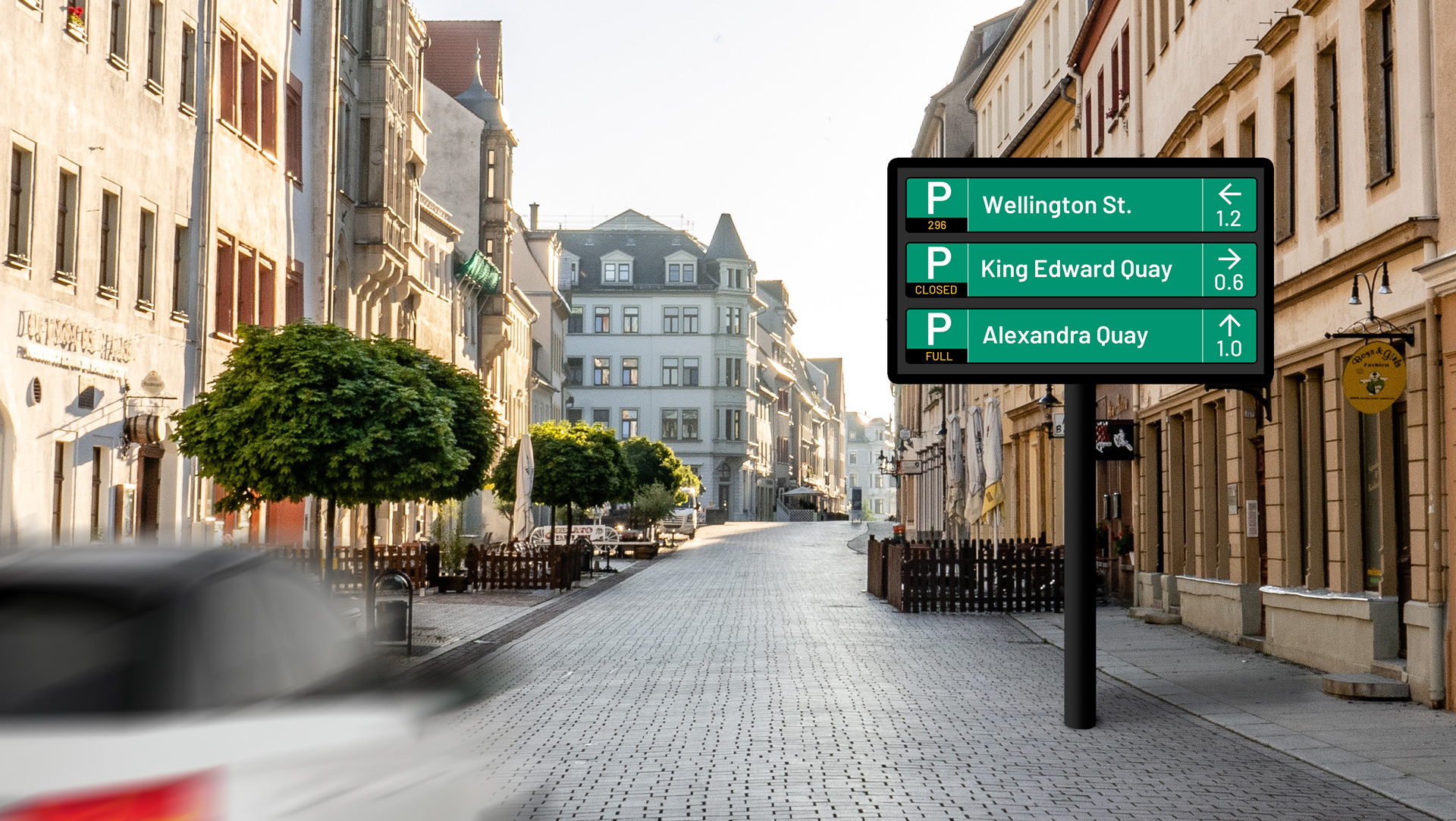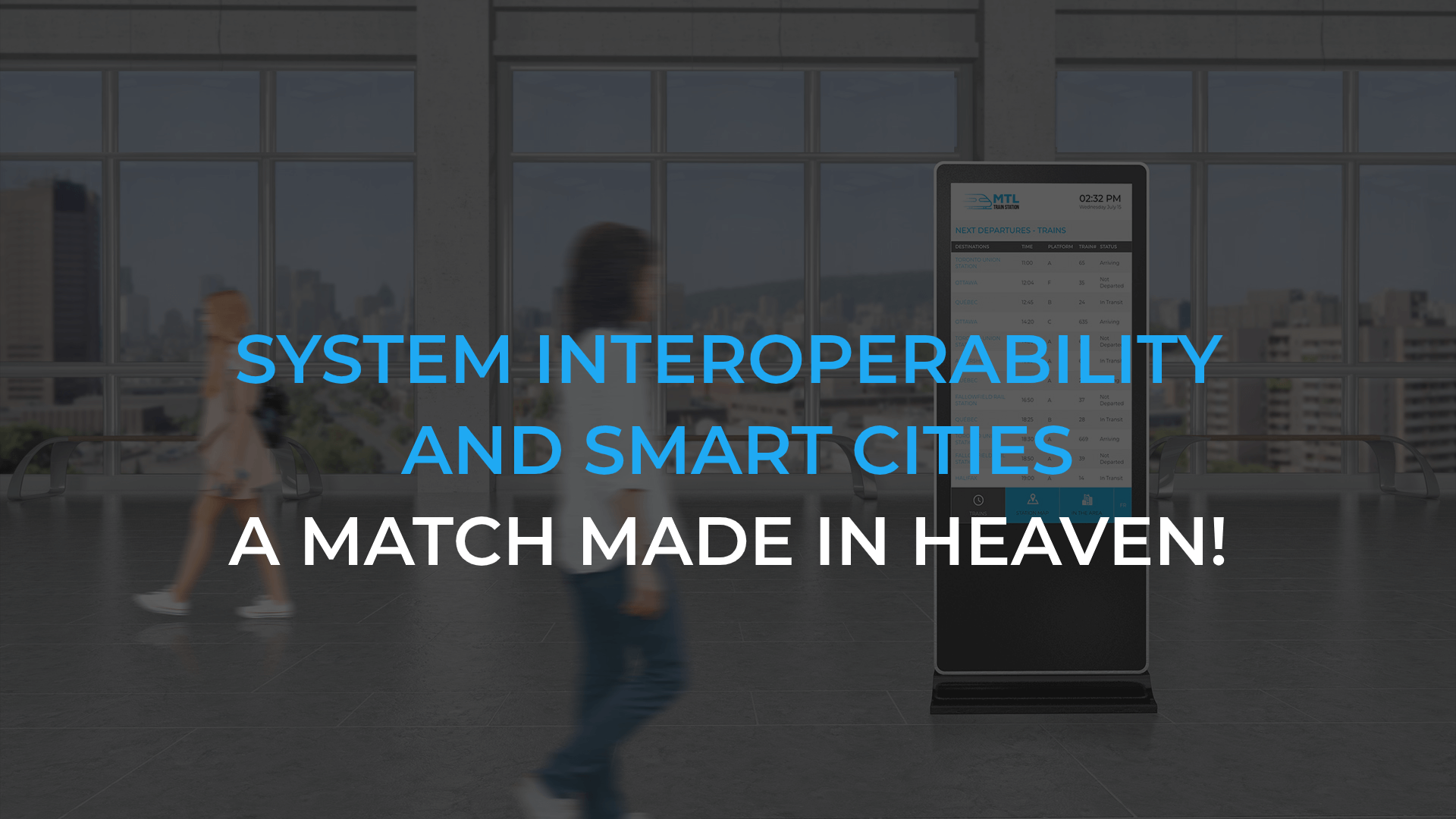Digital signage has become a powerful tool for cities, offering new possibilities to communicate and interact with their residents, visitors, motorists and workers. Whether in the streets, in arenas, in concert halls or in libraries, digital signage plays a significant role in the development of smart, connected cities.
Arenas/sports complexes
Digital signage helps display schedules of events automatically and in real time, improves internal communications with employees and enables centralized content management.
Many different types of information are shared in real time, such as game scores, last minute changes, upcoming events, results of the association or news about the team.
Displays showing game schedules can be automated, which means the digital signage software can be linked directly to the booking software you are already using (such as Ludik). This helps visitors stay informed and have an enjoyable experience.
Furthermore, digital signage can improve internal communications inside the arena or the sport complex by sharing messages with employees, players and other staff members (reminders about hygiene, safety guidelines, opening and closing times, etc.).
Concert halls/theatres
Digital signage helps efficiently promote events and shows. Displays installed outside or inside the theatre can share engaging ads and eye-catching trailers, which grabs the attention of visitors or passers-by and sparks interest for upcoming shows. Information about dates, times and details about shows can be easily updated, which creates a real-time communication channel that helps eliminate any confusion.
Visitor movement
Inside the theatre, digital displays can play an important role in managing spectators and helping them find their way. Touchscreens or interactive terminals installed in the lobby can display interactive maps of the building, seating information, cloakrooms, bars, washrooms and other available services. This helps spectators move around more easily and fully enjoy their experience, while minimizing the requests for assistance directed at employees.
Digital signage can also make waiting times seem shorter by sharing engaging content such as interviews with actors or musicians, clips from rehearsals or backstage anecdotes.
Dynamic digital signage also provides great flexibility for room management. The digital signage software can be linked directly to your room management tool and automatically display upcoming events on screens located in front of the rooms, on terminals or on touchscreens.
Library
Digital signage can also be very effective in public libraries. Displays installed near the entrance can show opening hours, new arrivals or schedules of upcoming conferences. This information is updated and displayed automatically through a data exchange with the library’s management systems, which eliminates the need for any human intervention.
Citizen communications
Digital signage can help promote tourist attractions, local businesses and cultural events. Displays can be used to share recommended activities, exhibits and attractions that shouldn’t be missed. Information is targeted based on the location and the visitors’ preferences, which offers a tailored experience that encourages them to explore the city further.
This communication tool can also be used to share targeted information with citizens, such as renewal dates for registering pets, dates and times of municipal council meetings, and opening times for exterior facilities such as public pools and paddling pools. In short, this helps residents and visitors stay up to date and make informed decisions, and improves the city’s safety and quality of life.
Public works
Digital signage can help share content for city workers. Many different types of relevant information can be shared, such as work schedules, assigned tasks, team achievements, number of days without an accident, the employee assistance program (EAP), safety guideline reminders, etc.
Dynamic parking guidance
Dynamic parking guidance systems inform motorists about the number of available spaces in parking areas of their choice, either for street or off-street parking. Information is updated in real time and displayed on signs in strategic locations along the street. Displays installed around the city also share important messages with motorists (such as “Water accumulation”, “No parking: Snow removal in process”, “Risk of freezing rain, drive accordingly”, etc.). This makes it easier for motorists as it facilitates traffic, especially in high-volume sectors.
In closing, digital signage plays a key role in cities. It improves internal communications with employees, helps share information in real time, promotes events and attractions, and makes travel easier for residents and visitors. It also facilitates management and enables content customization based on the specific needs of each location. As such, digital signage helps improve safety as well as the overall experience of citizens in the city.






